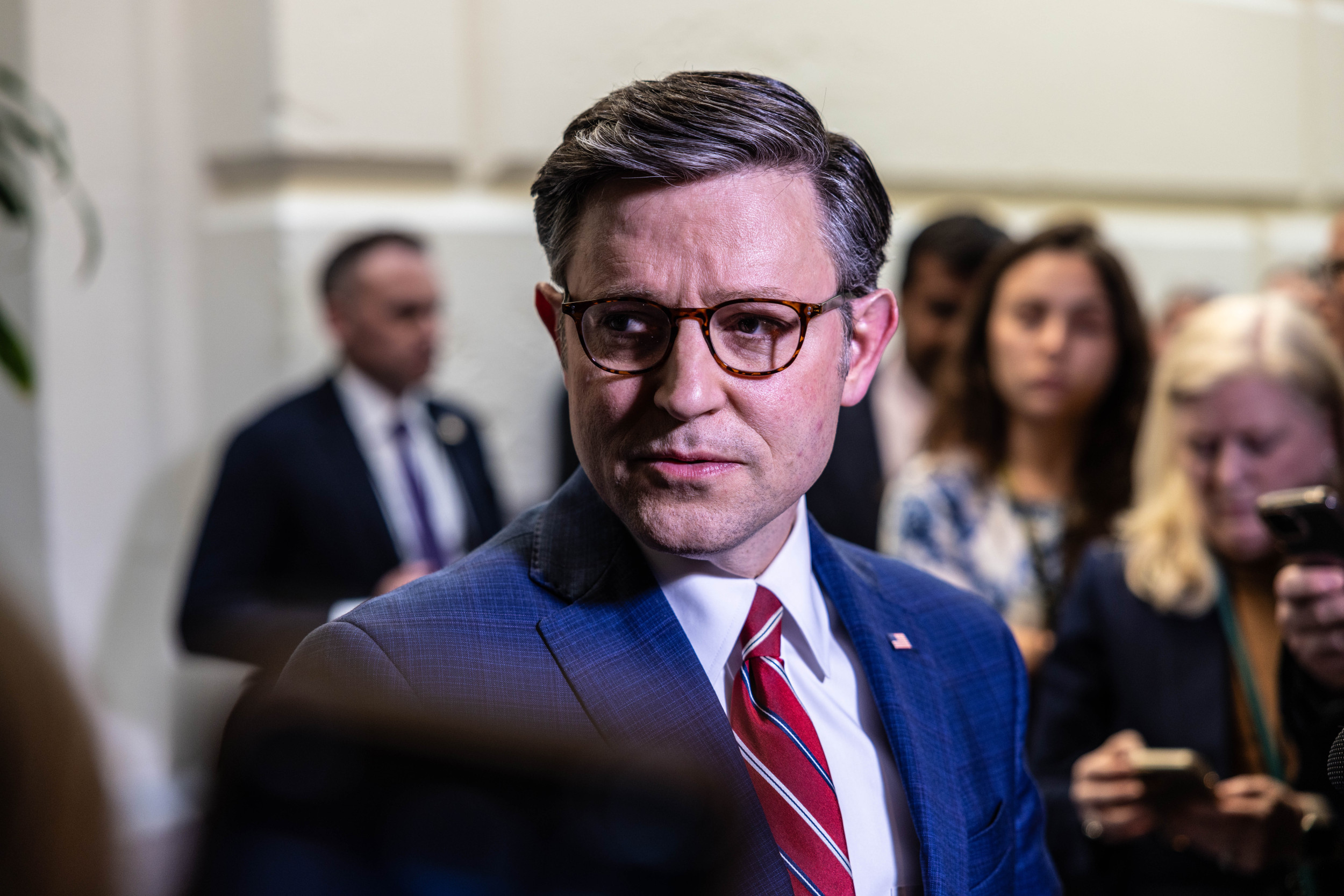When Laurie Aronson was 29, she had little patience for people who inquired why she still wasn't married. "I'm not a little spinster who sits home Friday night and cries," she'd say. As she passed 35, however, and one relationship after another failed to lead to the altar, she began to worry. "Things were looking pretty bleak," she says. But then a close friend's brother--a man she'd known for years--divorced. Slowly their friendship blossomed into romance. At 39, Aronson married him, becoming Laurie Aronson Starr and the stepmom to his three kids. Then, after five years of infertility treatment, she became pregnant with a son who'll be 4 in July. "My parents are thrilled--it's a relief for everyone," says Starr, now 49. "I wish I could have found the right person earlier and had more children. But I'm ecstatic."
As happy endings go, hers has a particularly delicious irony. Twenty years ago this week, Aronson was one of more than a dozen single women featured in a news-week cover story. In "The Marriage Crunch," the magazine reported on new demographic research predicting that white, college-educated women who failed to marry in their 20s faced abysmal odds of ever tying the knot. According to the research, a woman who remained single at 30 had only a 20 percent chance of ever marrying. By 35, the probability dropped to 5 percent. In the story's most infamous line, NEWSWEEK reported that a 40-year-old single woman was "more likely to be killed by a terrorist" than to ever marry. That comparison wasn't in the study, and even in those pre-9/11 days, it struck many people as an offensive analogy. Nonetheless, it quickly became entrenched in pop culture and is still routinely cited in TV shows and news stories.
Across the country, women reacted with fury, anxiety--and skepticism. "The popular media have invented a national marital crisis on the basis of a single academic experiment ... of dubious statistical merit," wrote Susan Faludi, then a 27-year-old reporter at the San Jose Mercury News, who saw the controversy as one example of a backlash against feminism. Boston Globe columnist Ellen Goodman wrote: "How gleefully they warn that an uppity woman may be overqualified for the marriage market. Reach too high, young lady, and you'll end up in the stratosphere of slim pickings."
Twenty years later, the situation looks far brighter. Those odds-she'll-marry statistics turned out to be too pessimistic: today it appears that about 90 percent of baby-boomer men and women either have married or will marry, a ratio that's well in line with historical averages. And the days when half of all women would marry by 20, as they did in 1960, only look more anachronistic. At least 14 percent of women born between 1955 and 1964 married after the age of 30. Today the median age for a first marriage--25 for women, 27 for men--is higher than ever before.
Not everyone wants to marry, of course. And we're long past those Jane Austen days when being "marriage-minded" was primarily a female trait; today many men openly hope for a wife just as much as women long for a husband. The good news is that older singles who desire a spouse appear to face far kinder odds nowadays. When the Census last crunched the numbers in 1996, a single woman at 40 had a 40.8 percent chance of eventually marrying. Today those odds are probably even higher--and may be only slightly worse than the probability of correctly choosing "heads" or "tails" in a coin toss.
To mark the anniversary of the "Marriage Crunch" cover, NEWSWEEK located 11 of the 14 single women in the story. Among them, eight are married and three remain single. Several have children or stepchildren. None divorced. Twenty years ago Andrea Quattrocchi was a career-focused Boston hotel executive and reluctant to settle for a spouse who didn't share her fondness for sailing and sushi. Six years later she met her husband at a beachfront bar; they married when she was 36. Today she's a stay-at-home mom with three kids--and yes, the couple regularly enjoys sushi and sailing. "You can have it all today if you wait--that's what I'd tell my daughter," she says. " 'Enjoy your life when you're single, then find someone in your 30s like Mommy did'."
The research that led to the highly touted marriage predictions began at Harvard and Yale in the mid-1980s. Three researchers--Neil Bennett, David Bloom and Patricia Craig--began exploring why so many women weren't marrying in their 20s, as most Americans traditionally had. Would these women still marry someday, or not at all? To find an answer, they used "life table" techniques, applying data from past age cohorts to predict future behavior--the same method typically used to predict mortality rates. "It's the staple [tool] of demography," says Johns Hopkins sociologist Andrew Cherlin. "They were looking at 40-year-olds and making predictions for 20-year-olds." The researchers focused on women, not men, largely because government statisticians had collected better age-of-marriage data for females as part of its studies on fertility patterns and birthrates.
Enter NEWSWEEK. We were hardly the first to make a big deal out of their findings, which began getting heavy media attention after the Associated Press wrote about the study that February. People magazine put the study on its cover in March with the headline the new look in old maids. And NEWSWEEK's story might be little remembered if it weren't for the "killed by a terrorist" line, first hastily written as a funny aside in an internal reporting memo by San Francisco correspondent Pamela Abramson. "It's true--I am responsible for the single most irresponsible line in the history of journalism, all meant in jest," jokes Abramson, now a freelance writer who, all kidding aside, remains contrite about the furor it started. In New York, writer Eloise Salholz inserted the line into the story. Editors thought it was clear the comparison was hyperbole. "It was never intended to be taken literally," says Salholz. Most readers missed the joke.
Despite the flawed statistics, some observers say the story holds up well. "Once you got over the sensational aspects, there was a lot of substance," says E. Kay Trimberger, a sociologist at Sonoma State University and author of "The New Single Woman." Among other trends the original story identified were the rise in cohabitation, the emergence of single mothers by choice, the fact that many single women were very happy with their lives, and an increasingly out-of-the-closet gay population as factors affecting marriage rates.
Some demographers immediately doubted the dire odds. Within months Census researchers did their own study and concluded that a 40-year-old single woman really had a 17 to 23 percent probability of eventually marrying, not 2.6 percent. In retrospect, the demographers faced a huge challenge in getting these predictions right. That's because marital behavior was undergoing a profound shift. Before 1980, a woman who hadn't married by 30 probably never would. But times were changing. "[Women] weren't remaining unmarried because marriage was less appealing, but because it was becoming more appealing to wait," says Steven Martin, a University of Maryland sociologist.
Such unexpected shifts are part of what makes demographic forecasting extremely difficult, not unlike making weather forecasts in the midst of a hurricane. No expert predicted the start of the baby boom in 1946, and today's actuarial tables could become obsolete due to a large-scale war or big medical breakthrough. Even though the original forecasts were wrong, today's researchers remain respectful of Bennett, Bloom and Craig's work. Their marriage-forecast numbers were only a minor part of their study, and the authors remain proud of their papers' larger findings on the diverging marriage rates between blacks and whites and the role that education plays in marriage. Today they look back on the "Marriage Crunch" controversy as a cautionary tale of what can happen when the media simplify complicated academic work. Bennett, now at Baruch College in New York City, says: "We're satisfied that our results have held up quite well."
Today a new generation of sociologists continues to tinker with the delayed-marriage puzzle. The latest research--a 2001 study by Princeton sociologists Joshua Goldstein and Catherine Kenney, and a 2004 paper by Maryland's Martin--concludes that roughly 90 percent of baby boomers will eventually marry. In a shift, however, the newer studies conclude that nowadays, a college degree makes a woman more likely to marry, not less. The Princeton paper suggests that for female college graduates born between 1960 and 1964, 97.4 percent will eventually marry. (Coauthor Kenney, now at the University of Illinois at Urbana-Champaign, says the study probably overstated the figure, but thinks the college benefit remains substantial.) This new twist has given researchers another worry: that marriage, which confers a host of economic, tax and child-rearing advantages, is becoming disproportionately reserved for better-educated, middle- and upper-class elites. "There appear to be winners and losers in our globalized economy, and the personal lives of the winners appear to be diverging from the personal lives of the losers," says Hopkins's Cherlin.
The women in that long-ago NEWSWEEK story who did marry reject the notion they'd have been losers if they hadn't found husbands. Virginia pediatrician Catherine Casey, 58, says she never obsessed about finding a mate; she met her husband while hiking the Badlands National Forest and married at 45. "There are so many women who do worry about getting married, but when you're happy with yourself, you find the right person," Casey says. Even the stories with bittersweet endings contain a fair share of happiness. At 33, Penny Stohn was so focused on her career that marriage seemed out of the question. But a year later she met a nice, funny guy named Ed Brouwer. They married and had three children. In 1999 Ed died of a liver ailment, and today Brouwer says she realizes that family, not work, is what constitutes a person's real legacy. "I reflect back on that article, and now I really do know what I was missing," she says.
Among the women in the story who remain single, two say they became preoccupied with something more important than spouse-hunting. Back then, Lillian Brown was a 50-year-old single woman who was adopting a child. Raising her daughter took most of her energy but was profoundly rewarding. Today Brown is a grandmother and contentedly single. "At this stage in my life, I certainly don't see any reason to be married," she says.
Before her appearance in the 1986 story, Nancy Rigg had been engaged to a wonderful man, but he'd drowned after going into a storm-swollen river to save a child. Since his death, Rigg has devoted herself to advocating for better swift-water rescue training. "Instead of giving birth to my own family, I gave birth to this [movement]," she says. She's had a half-dozen relationships, but says her boy-friends usually had a Consumer Reports mentality: they dated lots of women, were constantly looking for someone "better" and obsessed over potential incompatibilities instead of building a relationship. "There is a bit of wistfulness--I'd have loved to have married and had a family, but it didn't work out that way," says Rigg, now 56. "But I remain a hopeful romantic."
One striking aspect of this Where Are They Now exercise: none of these women divorced. Perhaps it's no coincidence. Statistically, people who marry at much higher-than-average ages don't have lower odds for divorce. But intuitively, some experts are starting to think that later-in-life marriages may have better chances of survival. "It makes sense--if you're getting married at a later age ... you'll have gone through a lot of relationships, and you'll know what you want [and] what you don't," says Elizabeth Gregory, director of the women's studies program at the University of Houston and the author of "The New Later Motherhood," to be published in 2007.
Despite book-club discussions of Maureen Dowd's "Are Men Necessary?" and much celebration of high-achieving single women like Condoleezza Rice, most unmarried women still say they hope for a husband someday. Lori White, a 48-year-old administrator at the University of Southern California, is strikingly attractive, has a good salary, owns a home, travels, has lots of friends and godchildren--but no husband. "People say that I'm picky," she says, citing the limited pool of African-American men who share her level of education. But even as women like White proclaim themselves happy with single life, many simultaneously say they'll stay in the market for a man. "Of course I want to get married," White says matter-of-factly. Across society, observers see all sorts of illustrations of just how deep the human marriage instinct seems to run. "Just look at gay couples today to see how important the [ability to] get married is for people," says Northwestern University psychologist Jay Lebow.
When today's single women discuss their marriage ambitions, however, they sound markedly different from women 20 years ago. "I just don't think the alarmist mentality is there anymore," says Bonnie Mas-lin, a New York psychologist who was quoted in the 1986 story. "I just don't see the franticness." Typical is Amy Russom, 35, a manager at a San Francisco software company. Even in 2006, people still routinely hit her with "How come you're not married?" "All I say is that I haven't met the right person yet." But she's confident she will, someday. Indeed, in the years since the "Marriage Crunch" hysteria abated, many women (and men, too) seem to have absorbed a simple, comforting mantra: if you want to get married, chances are high that sooner or later you probably will.
The old wisdom was that the more successful a woman was professionally, the harder it would be to find an equally accomplished mate. But that's changed, too. For some women, financial security creates an expanded pool of men from which to choose, whether they marry a starving artist or simply another professional whose earnings or status isn't as high as their own. Those role reversals represent a shifting power balance in marriage, which often results in more-egalitarian relationships in which who does the housework, cares for children or mows the lawn are open to negotiation. "We've never constructed marriages with this much legal and economic equality before," says Stephanie Coontz, author of "Marriage: A History" and a professor at Evergreen State College in Olympia, Wash.
Sociologists call women's historical tendency to marry more-accomplished men "hypergamy," and in a 2004 study, University of Washington economist Elaina Rose found it's declined over the years. And though both men and women are more likely to marry someone closer in age than they were in the 1980s, there are also plenty of women willing to consider younger men, which is no longer the taboo it once was. A few weeks ago Terey Allen, a 39-year-old mental-health professional, married Joshua DeLisle, 27, who's finishing his undergrad degree. "The age difference was a huge deal at first," she says. But after three years of dating, "we decided we couldn't live without each other." While she wonders if people may be giggling behind her back, to her face they offer a different message: You go, girl!
By most accounts, men's attitudes about marriage have evolved, too. "Generationally, I think Gen-Xers [of both genders] have a real commitment to marriage," says John Wise, 35, a finance manager in Baltimore. That's true, he says, because many watched their parents divorce. Wise figured he'd marry by 27, and after a couple of relationships in which neither he nor his partner was ready to commit, he's still on the hunt. When it comes to age, he's flexible: his last girlfriend was 37, and his current Ms. Maybe is 29. And despite the cultural notion that it's women who fixate on bridal magazines and window-shop for engagement rings, Wise admits he's spent time imagining the big, blowout wedding he'll share with his bride, whoever she may be.
Beyond all the research studies and forecasts, the trend-spotting and fearmongering that are too often the stock in trade of both journalists and academics, the real story of this anniversary is the unexpected happily-ever-afters. In the 1986 story, Boston public-relations executive Sally Jackson was happily single. She could find a man if she wanted, she figured, but she liked living alone. At 47, she married a man she'd known for years. Today she revels in having a travel companion, someone to talk to when they both awaken at 3 a.m., someone to love unconditionally who'll love her back. "I married a fabulous man and I'm crazy about him, and being blissfully married is better than being blissfully single, but not by that much," she said a few weeks ago. Several days later she called back. That part about marriage being only a little bit better? She'd lied. "Being married is really a lot better," she says. That may not be what single men or women want to hear. But for people of all ages who hope to offer their hands in marriage someday, the odds look far better today than a long-ago magazine article may have led you to believe.
Uncommon Knowledge
Newsweek is committed to challenging conventional wisdom and finding connections in the search for common ground.
Newsweek is committed to challenging conventional wisdom and finding connections in the search for common ground.
About the writer
To read how Newsweek uses AI as a newsroom tool, Click here.








